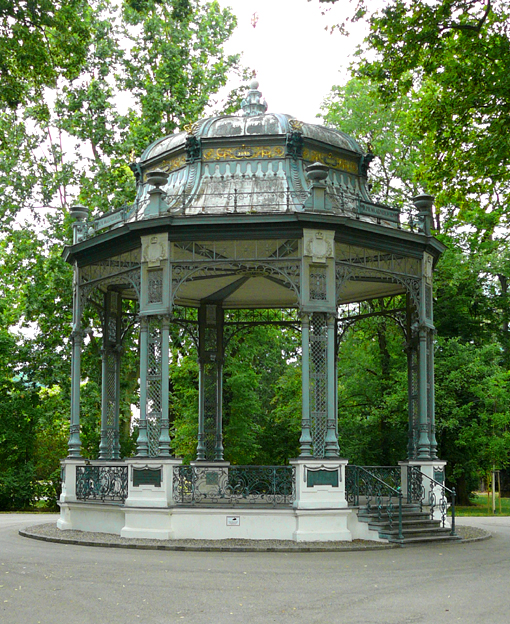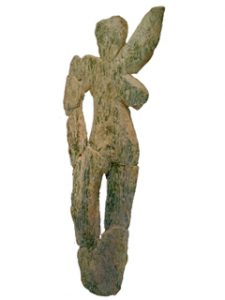
The history of music in Krems begins with the 38,000 year-old Fanny, named after the nineteenth century dancer, Fanny Eßler, who in an engraving, is shown dancing in a similar pose. Following a line of research proposed by Felitas Goodmann (1992), Fanny of Galgenberg may however, not actually be dancing but rather engaged in a shamanic rite which nevertheless still implies some form of percussion instrument with which to induce a trance state.
Fanny belongs to the first modern human culture, the so-called Aurinacian. From the culture of the Gravette, which followed the Aurignacian and to which the Venus of Willendorf belongs, a flute has been found 10 Kilometers north-east of Krems. This has been analysed and reconstructed by Bernadette Käfer, with a possible method of playing being inferred. The results can be heard on a CD published by the Austrian Academy of Science. For an excerpt see: www.musik-athome.at. To purchase the CD follow: verlagoeaw.ac.at.
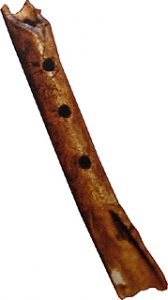
Jumping ahead to the next of the three main cultures of the European Upper Palaeolithic, there is the Magdalénian. This covers the period of around 18,000-12,000 years before present. Here a whistle found in the Gundenus Cave to the North of Krems, provides a ground tone of A7 minus ten cents which can be heard at: www.austria-forum/af.
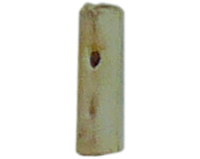
The next hint of music in the vicinity of Krems is at the Roman Camp of Mautern. Here clay masks have been found that were worn by mounted soldiers during tournaments. The four masks are on display in Museum Krems.
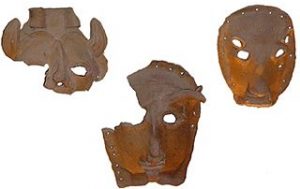
A fine example made of copper can be seen in the Antique Collection at the Museum of Art History in Vienna (Kunsthistorisches Museum). This is important as it shows a female face, indicative of a fictive persona as opposed to a portrait of the wearer. A stunningly impressive example has been found at Crossby Garrett in the North of England. Although made of clay and crudely formed, the clay masks found at Mautern are important as they show that such tournaments were widely practiced. At such tournaments, music will have undoubtedly been a feature, with contestants and winners being announced by fanfares of trumpets. Mosaics in Tripoli show gladiators performing to the accompaniment of music. Here, among the instruments used is a hydraulis or water organ and a cornu. This latter is a long, curved form of trumpet. The combination of cornu and hydraulis, without further accompaniment, also occurs at the center of a mosaic in Villa Nenning in Germany. Taking these hints as a cue, one imagine the masked riders being introduced by such instruments and possibly even performing to such accompaniment. See: www.musica-romana.de.
Thereafter the next references to music and musical contexts come in the form of manuscripts held in monastery libraries along with depictions of musical instruments in the illuminated margins and later in paintings. An example of a real instrument is a flute that was found in Stein in the Salzstadel. Dating from the twelfth century this is now on display in Museum Krems.
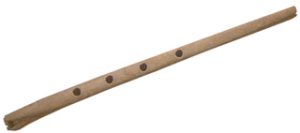
Worth mentioning in this context is Frau Ava, whose writings are the first example of poetry written in German. Born in around 1060, Ava was the mother of two children. When her husband died, she became an incluse and lived alone in Klein Wien, at the foot of Göttweig. Tradition associates her with a Medieval tower in the hamlet that is named after her. The tower is however of a later date. Nevertheless the site of the monastic settlement has been made out. Living as an anchorite, she dedicated herself to writing a series of epic poems on Biblical themes. When she died in 1127, her death was recorded in a number of chronicles. This implies that she was well-known and respected. Her work is known from two Medieval manuscripts, the Vorau Manuscript and the Görlitz Manuscript that was lost during the Second World War. Where the Vorau Manuscript dates from around 1190, the Görlitz Manuscript dates from the fourteenth century. This confirms that Ava was known and respected for her writing. In agreement with this interpretation, at the beginning of The Day of Judgement, she introduces herself in a manner that is confident. Ava wrote in Early Middle High German, which is a sonorous form of German that begs to be sung. It is however unknown whether anything she wrote was set to music.
In 1192 Richard the Lionheart was held captive at in Dürnstein. Soon transferred elsewhere, at some stage in his captivity, he wrote wrote Ja nuls om pres or, „No man who is imprisioned“, a song in which he articulated his sense of abandon.
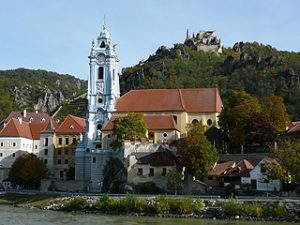
Like Ava, Richard wrote in his native tongue, this being the form of French known as Occitan. Richard was a devotee of the troubadour tradition which he knew from the court of his mother, Eleanor of Aquitane. Troubadours were wandering singers who went from court to court. The classic period of this musical and poetic form of expression was from 1170-1190 and typically the virtues of chivalrous love were extolled. In Dürnstein a number of taverns and restaurants are named after Richard the Lionheart. Others are named after his minstrel, Blondel. According to legend, Richard was found by Blondel. Wandering through Europe, the faithful minstrel stopped at every castle he came upon. Then he would sing songs that he and Richard used to sing together. After much searching, Blondel finally heard his verses being answered by someone in the castle above. He had found his master. Although but a legend, the story of Blondel expresses the ideal of the troubadours. A little way upstream from Dürnstein, at a promontory known as Watstein, there is a stature of a knight and his minstrel. Often assumed to be a depiction of Richard and Blondel, it is in fact a depiction of the troubadour ethos.
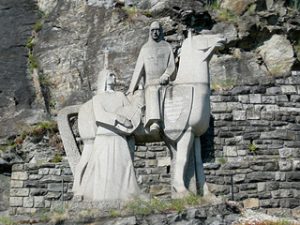
Attesting to a high level of musicality in Krems is the fact that in 1498, Emperor Maximillian I summoned two boy singers from Krems to sing in the Court Chapel in Vienna. During the Renaissance, copies of the works of Orland di Lasso, Franz Sales, Blasius Amon, Jakob Galus, Leopold Paminger and Adrianus (Willaert?) are recorded as items in book inventories. During this time, the teaching and performing of music was a part of responsibilities of the parish churches of Krems and Stein, with Krems playing a particularly prominent role. The director of church music, the Rector Chori, was also the school director, with the post being a bone of contention between parish and civic administrators. Two boy singers were employed along with three male singers who also helped with teaching. Instrumental accompaniment was the responsibility of the Thurmmeister. This was the „master of the tower“, who lived in the tower of what is now the Piarist Church and whose job also included keeping a look-out for fire. To this effect the towers of the churches in Krems and Stein both have balconies with panoramic views.
A piece of music composed in Krems was a carmen written by Adam Händl-Galliculus to celebrate the marriage of his widowed sister-in-law to a doctor in 1561. Printed in Krems, this was written for voices and is an example of Protestant musical culture. Meanwhile visual evidence of music-making comes in the forms of images on the Großer Sgraffitohaus in Krems. This forms the corner of Althangasse 2 and Margarethengasse 5. Dated to between 1553 and 1559, the images and show a flute player, a bagpipe player and drummers.
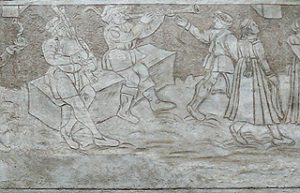
At Göttweigerhofgasse 7, there is the house where the Baroque composer, Johann Georg Zechner (1716-1778), lived. Not as well-known nowadays as he was during his lifetime, Zechner is one of the three most important composers of the so-called „Theresian Era“ and at the peak of his career and for some 150 years thereafter, was known throughout the Habsburg Monachy. Zechner wrote numerous pieces for organ as well as organ accompanied by strings. For the organist Franz Haselböck, Zechner „combined the concerto principles of the Italians – Vivaldi above all – with the emerging stylistic principles of the Austrian pre-classic style.“
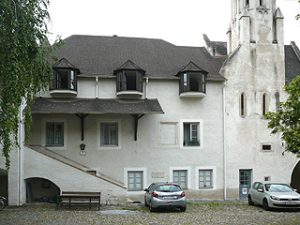
Born in Styria, Zechner came to the Krems-Stein area in 1736, to take up the post of organist at the Benedicine Monastery of Göttweig which, situated on a hill opposite Krems, occupies a commanding position and is an omnipresent feature of the landscape.
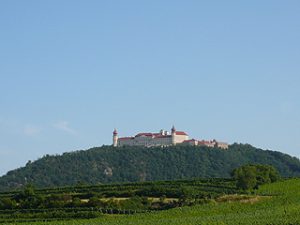
Encouraged by the abbot, Gottfried von Bessel, the young organist composed numerous works and quickly became renowned. While the enclosing structure and furnishings of the organ at Göttweig date from 1703/1704, the organ itself dates from 1982 and is tuned with an aim to expanding upon the traditional and romantically influenced, monumentat flavour of conventional organ tuning. To this effect, voices such as Unda maris and Vox coelitis from the older Rieger organ of 1920 were retained and the sound of the organ at Göttweig is characterised by a lightness and transparency that complements the architecture of the church which in a not dissimilar manner, is also a harmonic and highly successful fusion of Gothic, classical and Baroque elements.
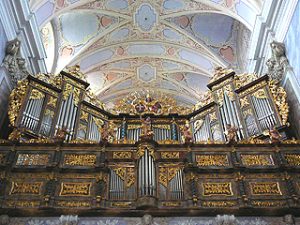
After several years at Göttweig, Zechner appears to have studied philosophy and theology, either in Prague or Vienna, as in 1746 he is described as being „Artium Literararium Philosophicum Magister“. With this title he was introduced as the composer of the music for a drama, The Perennial Debt to Apollo. This was an allegorical hommage to Bessel, held as a part of the celebrations that marked the 50th anniversary of the abbot’s being ordained a friar and of having received his doctorate.
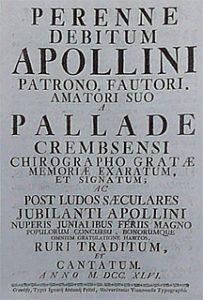
Not performed at the abbey, the piece was staged in a complex at Kremstalstraße 95 that belonged to the Jesuits and which included a mill. Although there was a stage it was evidently not big enough as an improvised stage was constructed specially for the occasion.
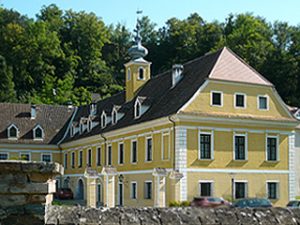
Another piece written to celebrate Bessel’s golden jubilee and with music by Zechner was Vota quinquagenalia. This was performed at the abbey and attended by no lesser personages than Empress Maria Theresia and her husband, Franz Stephan von Lothringen as well as Arch Duke Karl Alexander.
By 1750, Zechner was directing the choir at the Church of Saint Veit in Krems but continued to compose pieces for Göttweig. Around this time he was ordained as a priest. In 1753, the mayor and town councillors of Krems awarded him the beneficary post of Musician to the Chapel of All Saints in Stein which was well-paid and involved only a modicum of work. This enabled him to concentrate on composing and he produced a large number of widely varying work for secular and religious contexts. The Chapel of All Saints was one of three small chapels housed in the northern aisle of the Church of Saint Nicholas in Stein. Forming a continuous row, the chapels were open on the South side and seperated from each other by walls built between the vaults of the church. Although during the Baroque they were knocked down, the foundations were discovered during maintaince work carried out in 2000. Unfortunately, all that is known is that the chapel dedicated to Saint Nepomuk was the largest of the three and so can be assumed to have occupied a central position. Whether the Chapel of All Saints was equipped with a small, portable organ such as may be seen at the Museum of Shipping in Spitz is unknown. At the Church of Saint Nicholas Zechner also fufilled pastrol functions. Apart from having a chapel dedicated to them, in Stein, there was also an altar to the Saints, whose location is however unrecorded.
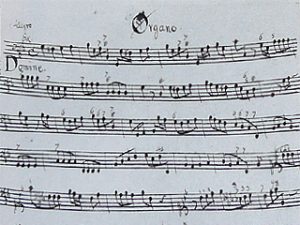
For those who read German, more can be found out at the Johann Georg Zechner Society, a music society in Gleisdorf, where Zechner was born. For a 28-page booklet published on the occassion of the 300th anniversary of the composer’s birth, see www.johanngeorgzechner.at. For an academic dissertation that includes a list of known works see www.johanngeorgzechner.at.
In 1772, the English musician and music historian, Charles Burney (1726-1814) travelled through Austria, Germany and Bohemia and in Krems enthused at the high level of musicality that he found there. One evening, from a barge on the river he chanced to hear four women singing privately in a house in Stein and was delighted at the competance with which the four voices of the polyphonic composition were sung. Ashore, he observed that in Krems „undistinguished citizens in taverns and farmers at work in the fields, will sing for pleasure, songs in two more voices“. Confirming the high level of musicality in Krems and the Wachau, are the organ-makers and violin-makers in Krems who, after the turmoil and destruction of the Thity Years War, from the eighteenth century onwards, were able to establish themselves and live from the production of high quality instruments.
Although Mozart is not recorded as having played in either Krems or Stein, he did spend the night at the Gasthaus zur Elefant in Stein. This was in 1762, when the young Mozart accompagnied by his father and brother, were on their way to Vienna. In Vienna, the precocious siblings were presented to Viennese society and performed to raptous applause. The Gasthaus zur Elefant is now the House of Regions in Stein and may be found at Donaulände 56. The portico in front of the house dates from this time and the Mozart family can be imagined as walking from a barge along a gangplank up to the columned arcade.
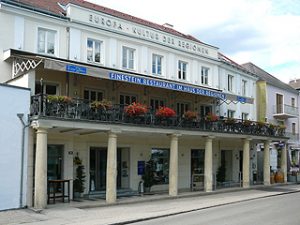
At Steiner Landstrasse 76 there is the Großer Passauerhof which was where the nineteenth scholar, Ludwig von Köchel (1800-1877), was born. Köchel is renowned to this day for compilation of a chronological list of Mozart’s prodigious and otherwise uncatalogued output.
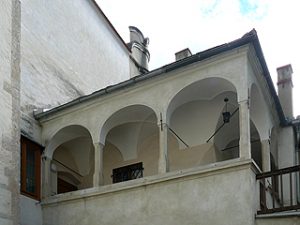
Founded in 1995, the Köchel Society is devoted to promoting the appreciation of classical music. To this effect, concerts performed by top quality musicians are regularly held. At these concerts, a piece of chamber music is introduced with passages and motifs being played so that their significance and function can be explained. There then follows an uninterrupted performance of the piece in its entirety. For information and the current program see: koechelgessellschaft.at. The concerts cover the period of musical history from Mozart to Beethoven and are often held in the former refectory of the Cappucine Monastery in Und. This is situated between Krems and Stein and referring to this, the name means „and“.
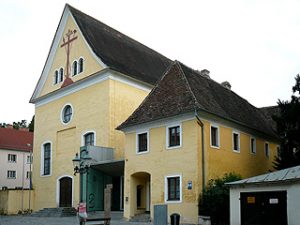
Another location is Schloß Gneixendorf, on the outskirts of Krems. This was where Ludwig van Beethoven (1770-1827) spent the autumn of 1826 and completed the final movements of his last two works, the string quartets Opus No.130 and Opus No. 135. Although the house and grounds of Schloss Wasserhof are not open to the public, there is an informative display that, mounted on the surrounding wall of the property, is to be found next to the bus stop.
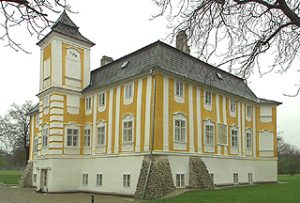
Whilst in Gneixendorf, Beethoven went to the neighbouring village of Lengenfeld, to see the physician, Dr. Karrer. As Dr. Karrer was out, Beethoven had to wait for him, sitting on a chair that is now on display in Museum Krems.
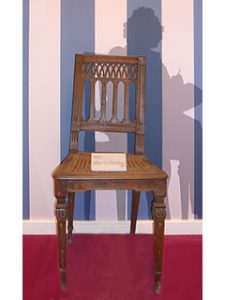
Striking very different different notes but also dating from the nineteenth century is an alpine folk instrument invented known as a „zither“. This is a stringed instrument with a wooden resonance chamber. Resembling a miniature grand piano, its strings are plucked. It is on a zither that the theme music of the well-known Carol Reed film, The Third Man, is played. An example of a zither may be seen in Museum Krems, along with a nineteenth century pair of bagpipes and a hurdy-gurdy.
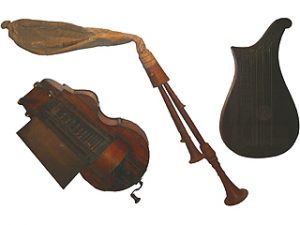
Continuing the folk music theme, at Kasernstrasse 30 in Krems there is the house where the folk music researcher, Josef Pommer (1845-1918), spent the last five years of his life. Pommer initiated the systematic collection and study of folk songs, music and dance in the German-speaking world.
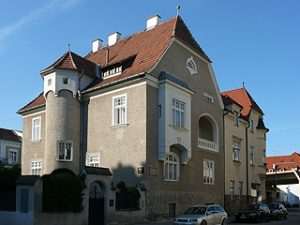
Moving from the nineteenth into the twentieth century, for many, the spirit of the Wachau is caught in the folk songs written by a number of composers, the three most prominent of which lived in Krems and Stein. In Krems, at Austrasse 31, there is the house where Ludwig Muther (1866-1924) lived.
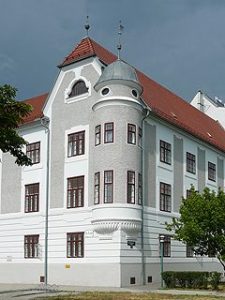
A contemporary of Muther’s was Rudolf Suß (1872-1933) who also lived in Krems at Göglstrasse 6.
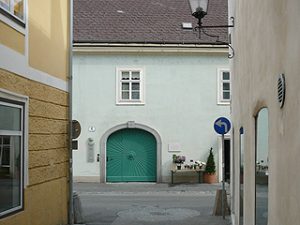
In Stein at Donaulände 60, there is the house where Ernst Schandl (1920-1997) lived. At the western end of the town, there is also a park that is named after the composer. For audio samples of some of Ernst Schandl’s most well-known songs, a list of works and a detailed biography, see www.ernstschandl.at.
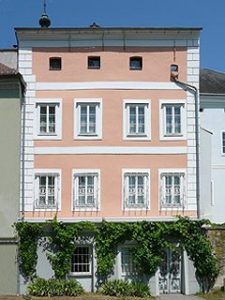
Alternatively, a short snippet of his well-known Wachauer Wine-grower’s March can be heard inside an 11,800 Liter barrel that is on display in the cellars of Museum Krems.
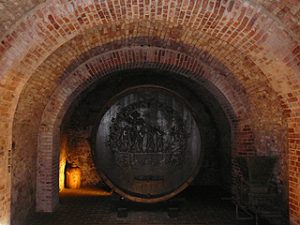
For those in search of CD’s, at the House of Regions, there is a bookshop where CD’s of regional music are stocked. Upstairs, concerts and lectures are held. Here the focus is on Europe as a patchwork of regions. See: www.volkskulturnoe.at.
Meanwhile modernity is represented by the Krenek Forum and the Archive of Contemporaries. The former is dedicated to the Austrian emigré, Ernst Krenek and is to be found in Stein at Minoriten Platz 4. Apart from archive material and an exhibition, there is also the synthesizer that Krenek used. See: es are held. Here the focus is on Europe as a patchwork of regions. See: www.krenek.at.
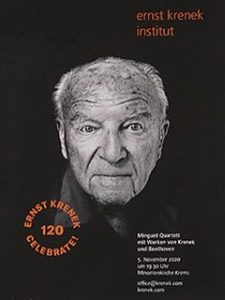
Also in Stein is the Danube University, where there is the Archive of Contemporaries. Here the legacies of prominent contemporaries are collected and preserved for prosperity, including the composers Friedrich Cerha and Kurt Schertsik. See: www.archivderzeitgenossen.at.
Also at the Danube Universtity, there is a Center for Applied Music Research and a Centre for Contemporary Music where a number of courses involving music and music management are offered. See www.donau-uni.ac.at. Fundamentally important to the maintaining of a living tradition, is the Musikschule in Krems. Here all aspects of music are taught and passed on to younger generations. See www.musikschule.krems.at.
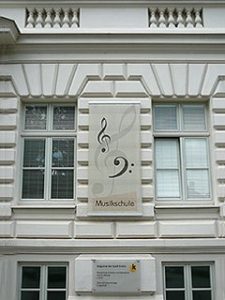
In Stein, the Salzstadl, where salt was once stored, is not only a restaurant but also provides a venue where a wide range of public performances are held including recitals and of contemporary music.
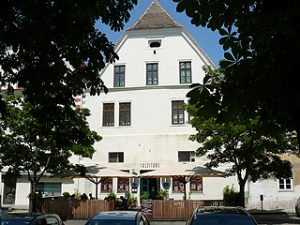
Among the concerts held are those hosted by the festival That’s Jazz. This was initiated by Andreas Mayerhofer, a jazz pianist who lives in Stein. For program details, see www.thatsjazz.at. For an over view of Mayerhofer’s work and current activities, see: www.andreasmayerhofer.at. Suffice to say that Mayerhofer’s Réflexions sur La Bohème, commissioned by the Köchel Society, can only be described as an absolute achievement that any composer would be happy to equal.
Also living in Krems and organising concerts is the composer Martin Theodor Gut, who together with Günter Rabl organises, Am Sound, a series of autumn concerts which are mainly held in the Ursula Chapel behind the vicarage of Krems Parish Church.
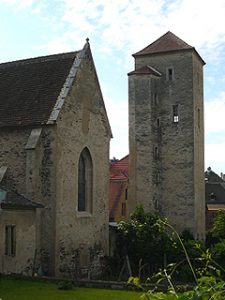
For more on Martin Theodor Gut and his music see the Reloading Humanism „People“ page. For news on Gut’s ensemble, Brennstein, see www.brennstein.at. Another active musician is Martin Ptak. See www.martinptak.com.
Apart from these musician organised festivals, Krems is home to a number of other music festivals including the Easter Imago Dei and the summer Glatt & Verkehrt. Open air concerts are held at Göttweig as well as in the church. Due to an innovative system of tuning, the organ receitals at Göttweig are to be particularly recommended. Downriver from Krems, at Graffenegg, a regular program of concerts is held in the grounds of an oversize historicist folly that dates from the nineteenth century. Although the house is not open to the public, tours are available for groups and through a bizzare twist of fate, the shelves of the library are stocked with communist literature. Upstream from Krems and Stein, is Dürnstein where a yearly Schubert Triade is held. This features the singer, Robert Holl and friends. See www.schubertiade-duernstein.at.
For those who speak German, the Köchel Society has developed an audio guide for smart phones. Narrated by Albert Hosp, this includes musical excerpts and covers many of the places named above. This can be accessed through the Society’s homepage or directly by following: musikinkrems.at.


